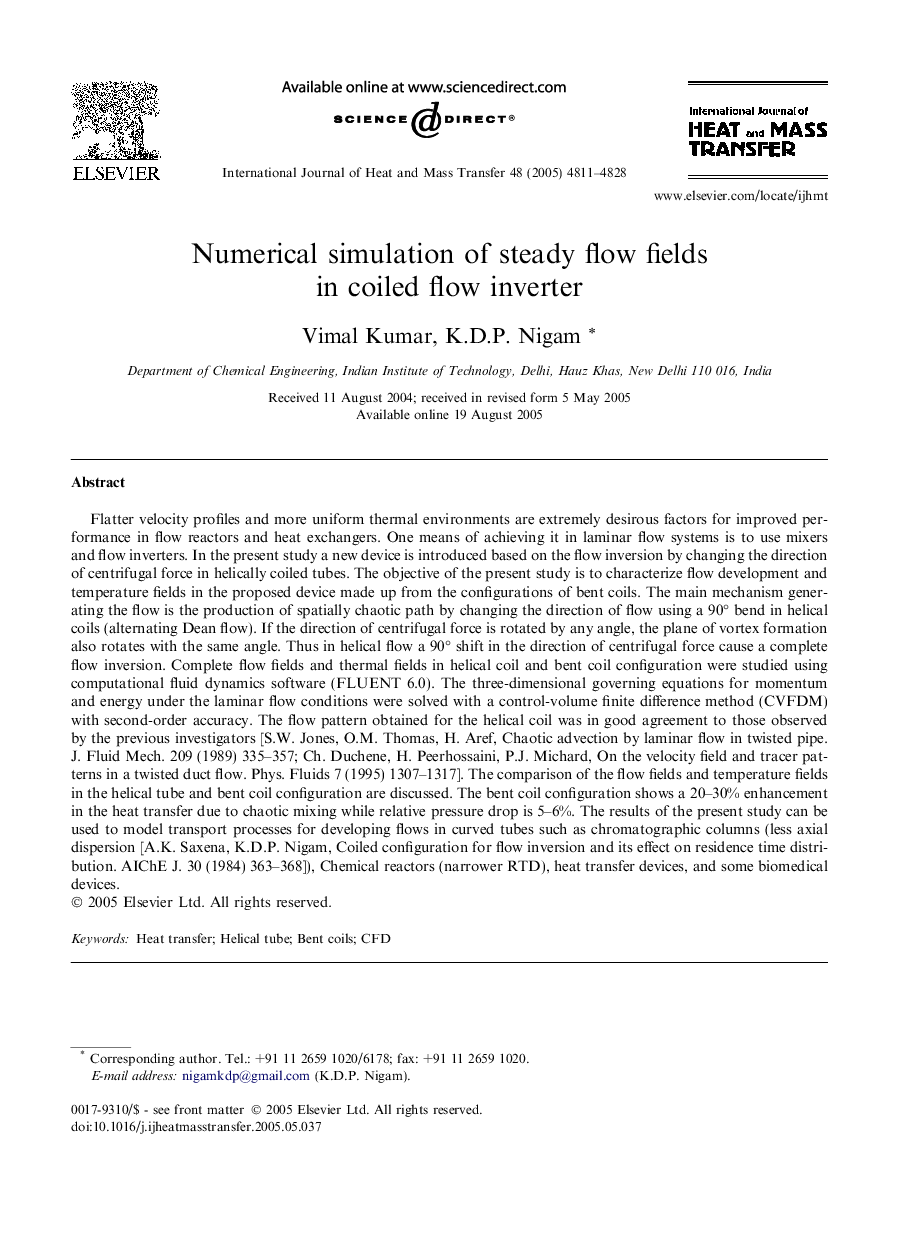| Article ID | Journal | Published Year | Pages | File Type |
|---|---|---|---|---|
| 662145 | International Journal of Heat and Mass Transfer | 2005 | 18 Pages |
Abstract
Flatter velocity profiles and more uniform thermal environments are extremely desirous factors for improved performance in flow reactors and heat exchangers. One means of achieving it in laminar flow systems is to use mixers and flow inverters. In the present study a new device is introduced based on the flow inversion by changing the direction of centrifugal force in helically coiled tubes. The objective of the present study is to characterize flow development and temperature fields in the proposed device made up from the configurations of bent coils. The main mechanism generating the flow is the production of spatially chaotic path by changing the direction of flow using a 90° bend in helical coils (alternating Dean flow). If the direction of centrifugal force is rotated by any angle, the plane of vortex formation also rotates with the same angle. Thus in helical flow a 90° shift in the direction of centrifugal force cause a complete flow inversion. Complete flow fields and thermal fields in helical coil and bent coil configuration were studied using computational fluid dynamics software (FLUENT 6.0). The three-dimensional governing equations for momentum and energy under the laminar flow conditions were solved with a control-volume finite difference method (CVFDM) with second-order accuracy. The flow pattern obtained for the helical coil was in good agreement to those observed by the previous investigators [S.W. Jones, O.M. Thomas, H. Aref, Chaotic advection by laminar flow in twisted pipe. J. Fluid Mech. 209 (1989) 335-357; Ch. Duchene, H. Peerhossaini, P.J. Michard, On the velocity field and tracer patterns in a twisted duct flow. Phys. Fluids 7 (1995) 1307-1317]. The comparison of the flow fields and temperature fields in the helical tube and bent coil configuration are discussed. The bent coil configuration shows a 20-30% enhancement in the heat transfer due to chaotic mixing while relative pressure drop is 5-6%. The results of the present study can be used to model transport processes for developing flows in curved tubes such as chromatographic columns (less axial dispersion [A.K. Saxena, K.D.P. Nigam, Coiled configuration for flow inversion and its effect on residence time distribution. AIChE J. 30 (1984) 363-368]), Chemical reactors (narrower RTD), heat transfer devices, and some biomedical devices.
Keywords
Related Topics
Physical Sciences and Engineering
Chemical Engineering
Fluid Flow and Transfer Processes
Authors
Vimal Kumar, K.D.P. Nigam,
